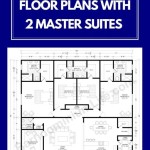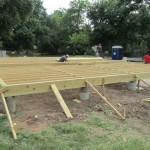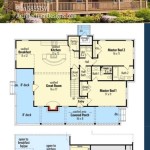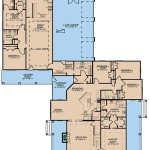House Plans With Loft Design: Maximizing Space and Style
House plans incorporating loft designs offer a compelling solution for homeowners seeking to optimize space utilization without sacrificing aesthetic appeal. These architectural designs effectively blend vertical space, creating versatile living areas and offering a unique character to a home. Loft designs are particularly beneficial in situations where land is limited, or a desire for open and airy living spaces exists.
The concept of a loft, traditionally referring to an open space directly under the roof, has evolved to encompass various design interpretations. Contemporary loft designs often incorporate semi-open plans, mezzanine floors, and elevated platforms, all serving to increase the functional area of a dwelling. From cozy studios to spacious family homes, loft designs can be adapted to suit diverse lifestyle requirements and architectural preferences.
Understanding the Advantages of Loft Designs
The incorporation of a loft design presents a multitude of advantages for homeowners. These benefits extend beyond mere space maximization, impacting the overall living experience and property value.
One of the primary benefits is the efficient use of vertical space. In areas where land is scarce or expensive, building upwards becomes a pragmatic solution. A loft design allows for the creation of additional living areas, such as bedrooms, offices, or recreational spaces, without increasing the building's footprint. This is particularly advantageous for urban dwellers or those seeking to minimize their environmental impact.
Another advantage lies in the creation of a more open and airy living environment. Lofts, by their very nature, tend to promote natural light penetration and enhanced ventilation. The increased ceiling height and unobstructed views contribute to a sense of spaciousness, making the home feel larger and more inviting. This is especially appealing in smaller homes where conventional layouts might feel cramped.
Furthermore, loft designs offer considerable flexibility in terms of space allocation and functionality. The loft area can be customized to suit the specific needs of the homeowner. It can serve as a private retreat, a dedicated workspace, or a multi-purpose zone for hobbies and entertainment. The adaptable nature of a loft makes it a valuable asset, accommodating changing lifestyles and spatial requirements over time.
Finally, a well-designed loft can significantly enhance the aesthetic appeal of a home. The unique architectural features of a loft, such as exposed beams, angled ceilings, and open staircases, add character and visual interest. This can translate into increased property value and a more desirable living environment. The design flexibility allows homeowners to express their personal style and create a truly distinctive home.
Key Considerations in Loft Design Planning
While the benefits of loft designs are undeniable, careful planning is essential to ensure a successful and functional outcome. Several key factors must be considered during the design phase to maximize the potential of the loft space and avoid potential pitfalls.
Ceiling height is a critical consideration. Building codes often dictate minimum ceiling heights for habitable spaces, and these requirements must be met to ensure the loft is legally compliant and comfortable for occupants. Insufficient ceiling height can result in a cramped and claustrophobic feeling, negating the benefits of the loft design. It is crucial to assess the existing structure and determine whether sufficient vertical clearance exists to accommodate a functional loft space.
Structural integrity is another paramount concern. The addition of a loft can impact the structural load of the building, and it is essential to ensure that the existing structure can adequately support the added weight. This typically involves consulting with a structural engineer to assess the load-bearing capacity of the walls and foundation. Reinforcements or modifications may be necessary to ensure the safety and stability of the building.
Access and egress are also important considerations. The loft must be easily accessible via a staircase or ladder that complies with building codes. The staircase design should be safe and comfortable to use, particularly for elderly individuals or those with mobility limitations. Furthermore, adequate egress routes must be provided in case of emergencies, such as fire. This may involve incorporating fire-resistant materials and providing a secondary escape route.
Insulation and ventilation are crucial for maintaining a comfortable living environment within the loft. The loft space is typically located directly under the roof, which can be prone to heat gain in the summer and heat loss in the winter. Proper insulation is essential to regulate the temperature and reduce energy consumption. Adequate ventilation is also necessary to prevent moisture buildup and maintain air quality. Strategies such as skylights, dormer windows, and efficient HVAC systems can help to ensure a comfortable and healthy living environment.
Lighting is another critical aspect of loft design. Lofts often benefit from natural light, but artificial lighting is essential for creating a functional and inviting space. A combination of ambient, task, and accent lighting can be used to create different moods and provide adequate illumination for various activities. Carefully positioned windows and skylights can maximize natural light penetration and reduce the need for artificial lighting during the day.
Exploring Different Loft Design Styles
Loft designs are not limited to a single aesthetic. The architectural style can be adapted to suit a variety of preferences, ranging from industrial chic to contemporary minimalism. Understanding the different design styles can help homeowners choose a loft design that complements their existing home and reflects their personal taste.
The industrial loft style is characterized by exposed brick walls, concrete floors, and exposed ductwork. This style typically incorporates raw materials and a minimalist color palette, creating a rugged and urban aesthetic. Exposed beams and metal accents are common features of industrial loft designs. This style is often found in converted warehouse or factory spaces.
The contemporary loft style emphasizes clean lines, open spaces, and natural light. This style typically incorporates modern materials such as glass, steel, and wood. The color palette is often neutral, with pops of color used to add visual interest. Contemporary lofts often feature minimalist furniture and sleek, uncluttered interiors. This style prioritizes functionality and simplicity.
The Scandinavian loft style is characterized by its simplicity, functionality, and connection to nature. This style typically incorporates light wood tones, natural textures, and a neutral color palette. Scandinavian lofts often feature large windows to maximize natural light and create a bright and airy atmosphere. The interior design is typically minimalist, with a focus on comfort and functionality. Plants and natural materials are often used to bring the outdoors in.
The rustic loft style embraces natural materials, warm colors, and a cozy atmosphere. This style typically incorporates reclaimed wood, stone accents, and exposed beams. Rustic lofts often feature fireplaces and comfortable furniture, creating a welcoming and inviting space. The interior design is often inspired by nature, with elements such as woodsy patterns and natural textures adding to the rustic charm.
Ultimately, the choice of loft design style depends on the homeowner's individual preferences and the overall aesthetic of the home. Regardless of the style chosen, careful planning and attention to detail are essential to create a functional and aesthetically pleasing loft space.
The successful implementation of a loft design relies on a comprehensive understanding of the advantages, key considerations, and available design styles. By carefully planning and executing the project, homeowners can create a versatile and valuable addition to their home that maximizes space, enhances aesthetic appeal, and improves the overall living experience.

41 Unique 3d Floor Plan Ideas Engineering Discoveries Tiny House Loft Small Apartment Design Interior

Bis Court With Loft Design Detail And Floor Plan Integrity New Homes

Loft Cabin Tiny House Floor Plans Design Small

Small Cottage Floor Plan With Loft Designs

Perfect For Your Budget 2 Bedroom Modern Loft House Cool Concepts

Loft House Designs On A Budget Design Photos And Plans

Small Cabin House Plans With Loft And Porch For Fall Houseplans Blog Com

Small Cabin Designs With Loft Floor Plans

City Loft Floor Plan Interior Design Ideas

Modern Loft House 16 Pinoy Plans








